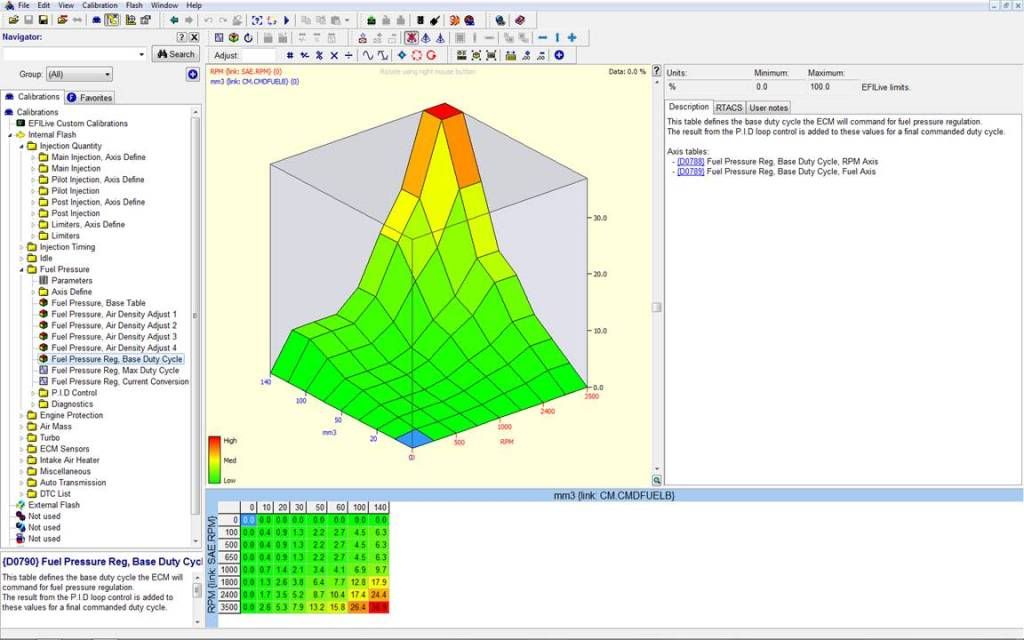Wow. Thanks for sharing. I'm shocked that this is the first time PID's and EFI Live has been mentioned on the boards (that I've seen.) I gotta start clicking around with this stuff.
2. PID control would still come into play as the ECM transitions from one value to another on the table. (Correct?) As your inputs move about the map/table, even with its numerous data points, there are still gaps. Even smoothed, there still aren't enough values present in the table to increment progressively enough, PID loops would still be necessary to control the transition from value(setpoint) to value(setpoint). Is this correct?
Remember even though there is only so many points the ecm averages out between points, its not a PID doing this simple math.
Same as a open loop controller is following a table, with math it is joining the points at any given time.
The assumption I made with my statement about being necessary(or not) to tweak these values was based upon use of linear steps in a map (as opposed to sharp changes) and responses from hardware that are similar to factory.
Where I see tweaking these might be beneficial would be an application with a modified CP3. Perhaps one could smooth the response of an FCA where the profile of the passageway has been modified? This may achieve smoother ramps in pressure and add driveability and consistency with the non linear area machined into the FCA groove. To my knowledge, this is not a trait highly modified pumps are known for.
Winner winner chicken dinner!!! This is exactly were the Pressure regulator base duty cycle table shines....match the new found flow with what is actually required through experimentation.
Again....this may still require no modification to the actual PID settings if you are happy with how quickly the response.
What say you? (all)

